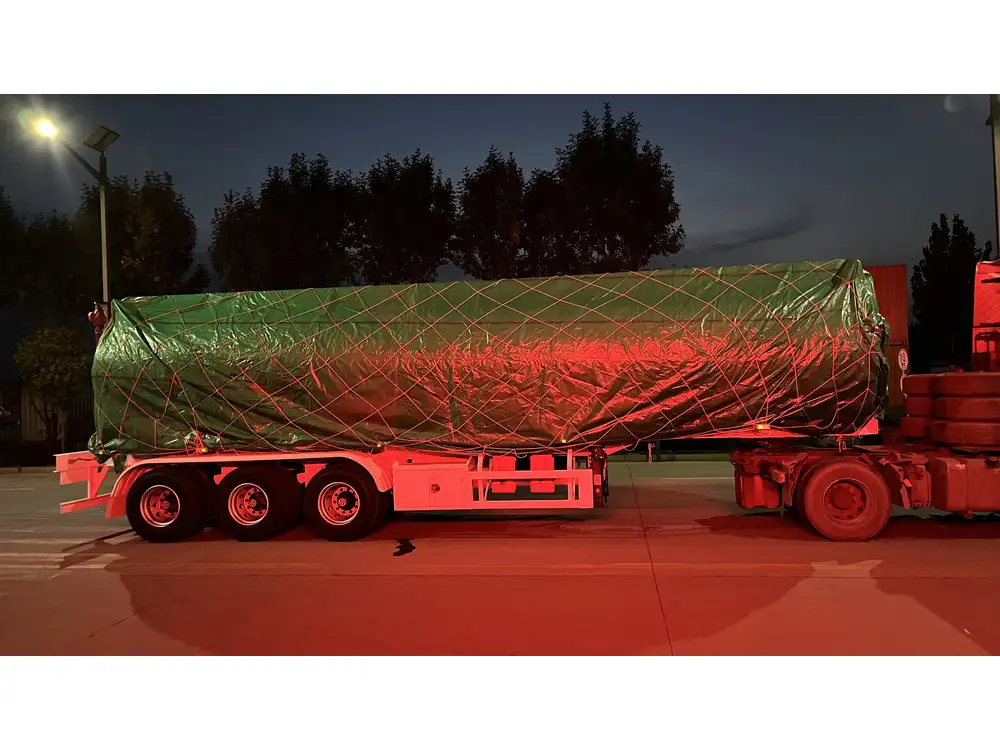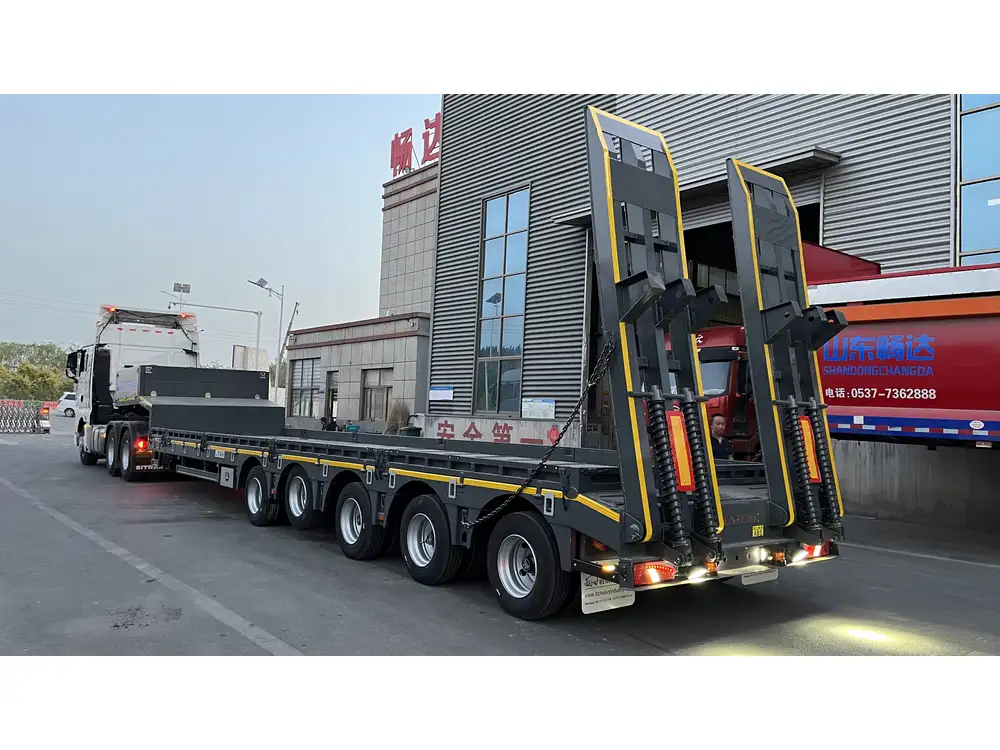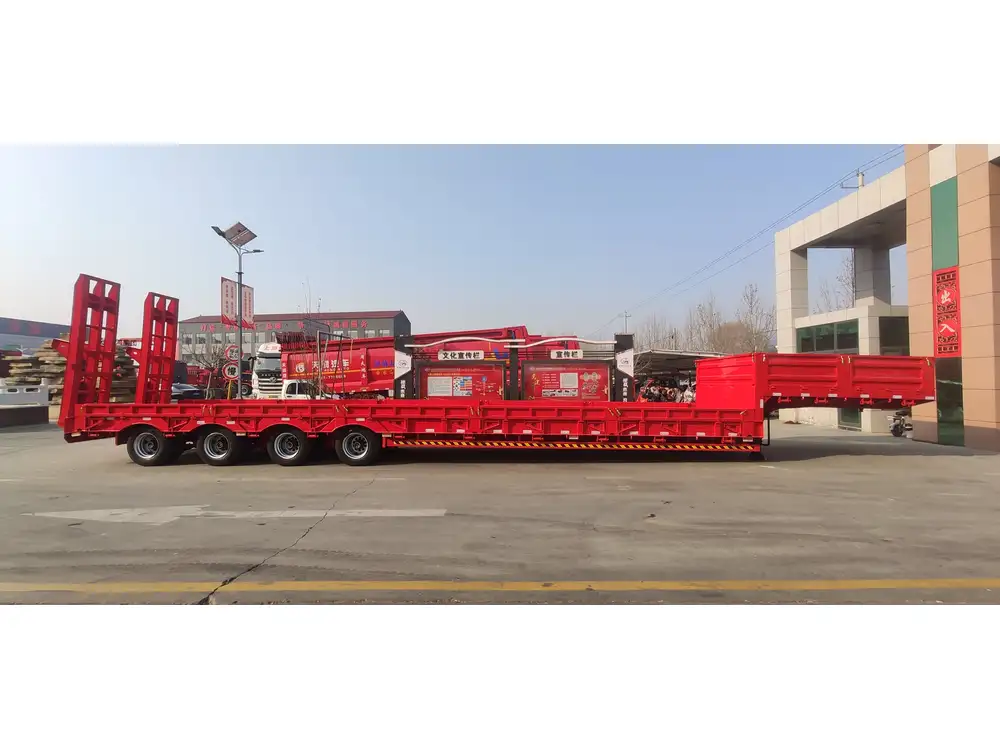Understanding the dimensions of semi trucks and trailers is crucial not only for legal compliance but also for optimal operation within various environments. This guide dives into the specifics of semi truck and trailer widths, the implications of these dimensions on transport regulations, and their impact on vehicle operation.
Standard Width of Semi Trucks
The width of a semi truck without a trailer typically ranges around 96 inches (8 feet). This standard width is a vital metric in transportation, providing a balance between cargo space and compliance with road regulations.
Key Specifications
| Component | Specification |
|---|---|
| Semi Truck Width | 96 inches (8 feet) |
| Trailer Width | 96 inches (8 feet, standard) |
| Maximum Allowable Width | Varies, often up to 102 inches (8.5 feet) |

Are There Exceptions?
While the common measurements hold true across most regions, some states may allow wider loads under special circumstances. For example, over-width permits can allow vehicles exceeding the standard width to operate, often for specific industries such as construction or agriculture that require specialized trailers.
Standard Width of Trailers
Trailers used in conjunction with semi trucks have a similar standard width. The majority of box trailers and flatbed trailers adhere to a maximum width of 102 inches (8.5 feet). This maximum width applies to general freight and is integral in ensuring cargo stability and safety during transport.
Wider Trailers – What to Know
Some manufacturers offer wider trailers for specific applications, which can go beyond the standard dimensions. For instance:
- Specialized Equipment Trailers – These can often exceed the standard 102 inches and may reach widths up to 120 inches (10 feet).
- Lowboy Trailers – Used primarily in construction, these can be configured to handle oversized equipment while maintaining compliance with state regulations.
| Trailer Type | Width |
|---|---|
| Standard Box Trailer | 96 inches (8 feet) |
| Standard Flatbed Trailer | 102 inches (8.5 feet) |
| Specialized Equipment Trailer | Up to 120 inches (10 feet) |

Importance of Knowing Semi Truck and Trailer Widths
Regulatory Compliance
Understanding the full extent of semi truck and trailer widths is imperative for compliance with local, state, and federal regulations. These regulations dictate not only the widths allowed on regular highways but also on bridges, tunnels, and city streets.
Handling and Maneuverability
A greater width can affect a truck’s handling characteristics, especially during turns and when navigating narrow roads or parking lots. Awareness of these dimensions can lead to better planning and operation, potentially reducing accidents caused by width-related limitations.

Comparison of Trailer Types and Their Widths
Each type of trailer serves a unique purpose in transport and has its own dimensional standards. Below is a comparative analysis of prevalent trailer types.
| Trailer Type | Common Width | Purpose |
|---|---|---|
| Flatbed Trailer | 102 inches | Ideal for hauling large, uneven loads |
| Reefer Trailer | 102 inches | Designed for refrigerated goods |
| Box Trailer | 96-102 inches | Carrying general freight |
| Lowboy Trailer | Varies (up to 10 ft) | Transporting heavy machinery |
| Car Hauler | 102 inches | Designed for transporting vehicles |
Special Considerations for Wider Loads
When planning to transport wider loads, it’s important to consider several factors:
Permitting: Many jurisdictions require special permits for oversized loads, which can involve additional fees and restrictions. It’s essential to check the specific regulations of each state or region before proceeding.
Safety Precautions: Wider loads present unique challenges in terms of visibility and stability, particularly during high winds or adverse weather conditions. Utilizing escort vehicles and proper signage can mitigate risks during transit.
Navigation: Planning your route is crucial. Wider loads may be restricted on certain roads, requiring drivers to navigate around obstacles or through designated routes.
The Role of Vehicle Length and Height
While width is critical, it is essential to remember that vehicle length and height are equally important when assessing overall dimensions.
- Length: The typical full combination length of a semi truck and trailer can reach up to 75 feet, depending on state regulations.
- Height: Most semi trucks have a height in the range of 13.5 to 14 feet, which must be accounted for when traveling under bridges or overpasses.
Understanding how these dimensions work together helps prevent costly accidents and ensures that transport operations remain efficient and safe.

Evolving Standards and Future Trends
The logistics and transportation sectors continue to evolve with the growth of e-commerce and advancements in truck design. Future trends may alter width standards and trailer configurations to better accommodate the increasing demand for freight transport.
Innovations in Trailer Design
Innovative trailer designs that maximize aerodynamics may also influence width standards.
- Aerodynamic Trailers: These trailers, often equipped with side skirts and other features, may be designed to improve fuel efficiency without sacrificing safety or compliance.
- Flexible Width Options: Emerging trailer designs may offer adjustable widths, allowing operators to conform to both standards and specific cargo requirements dynamically.
Conclusion
In-depth knowledge of semi truck and trailer dimensions, particularly their width, is essential for anyone involved in freight transport. By comprehending the standard measurements, regulatory considerations, and safety implications, operators can maximize their efficiency and compliance on the road.
Awareness of these dynamics not only aids in logistics planning but also enhances road safety, ensuring that both operators and the public are safeguarded throughout the transport process. As the logistics industry continues to evolve, staying informed about these changes is vital for maintaining operational excellence in an increasingly complex environment.



